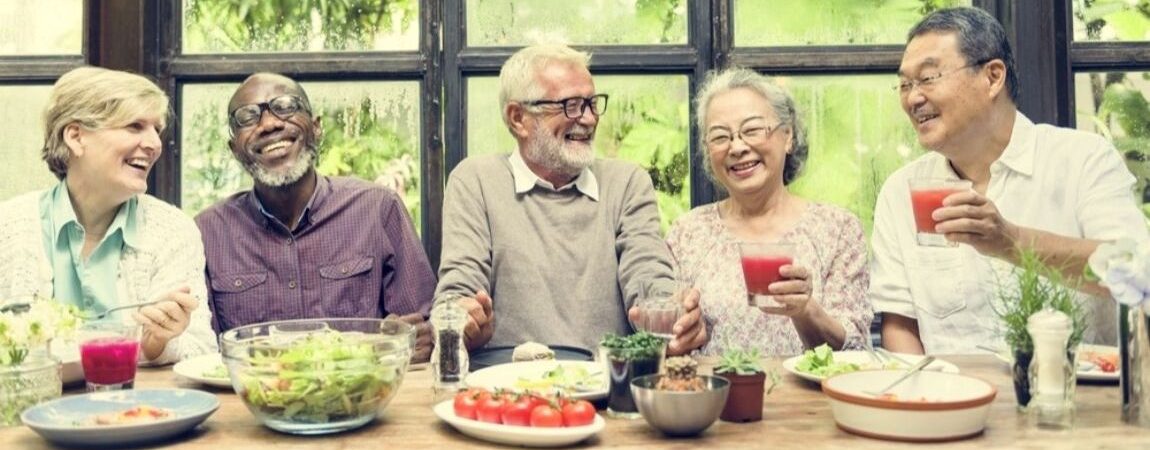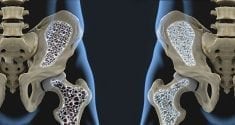Scientists Find Link Between Osteoporosis and Quality of Social Life
When bones are healthy, they are able to maintain a certain degree of density; that is, as bone tissue begins to degrade, the body produces more bone to make up for that loss. In this way, the body stays strong and the bones can continue to support the tissue, muscle and organs throughout the body. However, with osteoporosis, bone loss occurs more quickly than it can be replaced. Alternatively, the body may no longer be able to create more bone to maintain optimum levels of bone density. The onset of osteoporosis can have a variety of causes, including hormone imbalance, nutritional deficiencies and age. Now, recent research has found a surprising link between osteoporosis and social life, which suggests maintaining an active social life as you age may help you keep your bones strong.
What is Osteoporosis?
 Osteoporosis is a common condition that primarily affects older adults and seniors. According to surveys conducted by the International Osteoporosis Foundation (IOF), there are more than 44 million people suffering from osteoporosis in the United States. Even though this is a common medical condition, it's hard to identify because there usually aren't any obvious symptoms.
Osteoporosis is a common condition that primarily affects older adults and seniors. According to surveys conducted by the International Osteoporosis Foundation (IOF), there are more than 44 million people suffering from osteoporosis in the United States. Even though this is a common medical condition, it's hard to identify because there usually aren't any obvious symptoms.
Osteoporosis is typically diagnosed after the individual experiences a bone fracture. In fact, the condition makes breaks and fractures more likely to occur from minor accidents. A fall is one way a break may occur, but people with advanced osteoporosis may also break a bone by sneezing or coughing. The spinal vertebrae, hips or wrists are common places where bone fractures can occur. When there's a break in the spinal vertebrae, the individual may notice that their posture is affected and they may fit into smaller sized clothes.
The risk factors for developing osteoporosis include:
- Gender: Women are more likely to develop osteoporosis than men, especially after menopause.
- Age: The condition is more common in adults over the age of 30.
- Estrogen: When estrogen production is inhibited, the body has more difficulty generating new bone.
- Race: The condition is more common among white and Asian people.
- History: If there are family members with multiple bone fractures, or if you have broken bones a few times in your lifetime, you may be more likely to develop osteoporosis.
New Research Finds Surprising Connection Between Osteoporosis and Social Life
A new study out of Tucson's University of Arizona examining the link between osteoporosis and social life may have found a startling link between a woman's level of social interaction and her risk of developing osteoporosis. The study found that women who were less socially active were more likely to develop the condition within their lifetimes. The study also suggested that the quality of the social interactions played a part in how they affected physical health. Specifically, it was important that the individual enjoyed the social interactions for them to be of benefit.
The researchers worked off the premise that this interesting relationship between osteoporosis and social life was related to a type of stress called "psychosocial stress." Psychosocial stress is the type of stress experienced after highly negative life events. When a person feels dissatisfied with life in general, experiences lower levels of optimism or suffers frequent setbacks, this type of stress becomes more common. As conditions that cause psychosocial stress persist, the body produces higher levels of stress hormones in response. These hormones cause the body to utilize minerals that are essential to bone health and, as bone density decreases, inhibited growth hormones prevent restoration of lost bone.
In the study, 11,020 women between the ages of 50 and 70 were studied to observe the relationship between bone health, social interactions and psychosocial stress. These participants were a part of the Women's Health Initiative (WHI), which is an ongoing study intended to understand more about how women are affected by heart disease, osteoporosis and breast cancer. The study involved surveys about the women's social interactions, support structures and social strain.
Data was collected from the women at the start of the study and again after six years. By the six-year mark, the research team found that women who had poor social interactions had also experienced greater bone density loss. Even after the researchers accounted for contributing variables, such as body mass, age and tobacco and alcohol use, these results held true. It was also found that greater social strain was linked to greater loss of bone mineral density, particularly around the lower back and hip bone.
These areas were also negatively impacted when women experienced higher stress from challenging social functioning levels. In particular, the researchers found that social strain resulted in increased bone loss. Using a scale of one to five to measure social strain, they found that bone loss increased for each additional point the women scored for social strain. They recorded 0.082 percent more bone loss in the femoral neck bone, a 0.108 percent increase in the loss of hip bone density and an increase of 0.069 percent in degraded lumbar spine bone density.
Tips for Keeping Your Bones Strong and Healthy
While engaging in more enjoyable social activities may be one way to protect against osteoporosis, there are many more natural ways to help you keep your bones strong and healthy. Following are just a few suggestions.
Get More Calcium
 At a minimum, everyone should be getting at least 1,000 mg of calcium each day. As women reach age 50, that amount should be increased to 1,200 mg daily. Men should increase to 1,200 mg of calcium daily by age 70.
At a minimum, everyone should be getting at least 1,000 mg of calcium each day. As women reach age 50, that amount should be increased to 1,200 mg daily. Men should increase to 1,200 mg of calcium daily by age 70.
Take a Dietary Supplement
In addition to vitamin D and calcium, there are certain vitamins and minerals that your body needs to help protect and strengthen your bones. Taking a high-quality dietary supplement specially engineered to promote bone health can help you protect your bones as you age.
Increase Daily Exercise
While you should get a minimum of 30 minutes of moderate- to high-intensity physical activity each day, getting more is better. Increased exercise will help you build muscle and strengthen your bones.
Stay Away From Tobacco and Alcohol
Controlled substances will degrade your bone density over time, especially when you overindulge. If you can't quit smoking, at least reduce the frequency that you do smoke. Similarly, limit alcohol consumption to two drinks or less per day.





